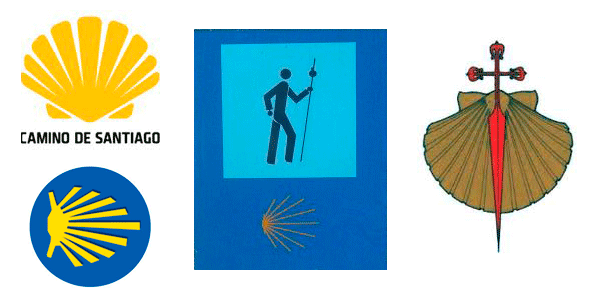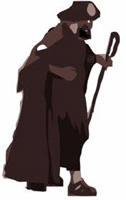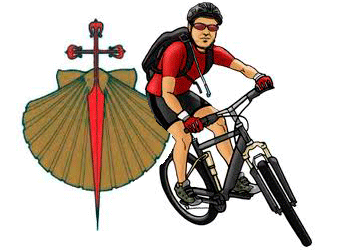
Routes
In the county, you can explore many routes, but the main ones are:
- ROUTE OF SAN ANTON DE COCILLEIRO.
- ROUTE OF LAS HOCES DEL ESVA.
- ROUTE OF CABO BUSTO: path along which you will be able to enjoy the cliffs on the coast for most of the way
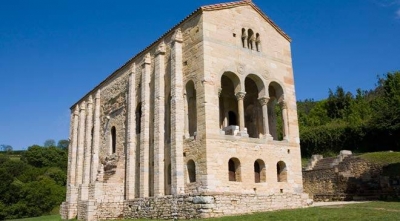
HOTEL ZABALA is located in a strategic place. Here, you can comfortably stay while you visit the rest of the region, while still coming back to stay for the night.Places you can visit:
- Oviedo and its Pre-Roman Monuments
- Gijón and Avilés (Centro Cultural Niemeyer)
- Covadonga National Park
- Muniellos National Reserve
- Somiedo National Park
- Fishing Villages
- Museums of different themes
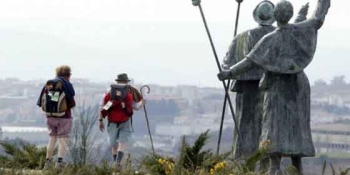
We are located on the route of “Camino de Santiago”. Almuña is at the end of one of the hardest stages during the journey through Asturias. It is the ideal place to end or begin this stage, or also to establish a base out of which you can begin other various journeys.
Ask for our special tariffs for pilgrims
If you travel on Bike we have a safe place for your vehicle.
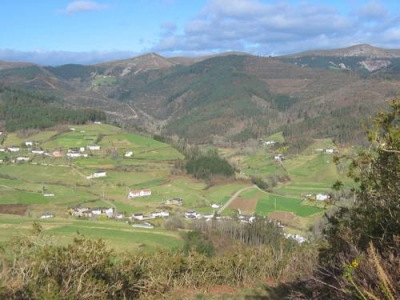
The county of Valdés is located in the western part of the Principality of Asturias. It has three distinct areas. To the north is the coastal plateau with its impressive cliffs and dunes, highlighting Otur beaches, Caves beach, or Barayo. South is the county of Tineo, a mountainous area, which hosts the mountains of Adrado, The Estoupo, Buseco and Silvallana village (brañas vaqueiras). The third zone is formed by the valleys of the interior, highlighting the Valley Wall (protected Landscape Esva Basin), through which flow the rivers which are filled with trout and salmon.
In the county of Valdés, you can visit:
- The Valley and Wall Parish (Prince of Asturias Prize for the People specimen 2001).
- Tower of Villademoros. Imposing tower built in the late Middle Ages (XV century)
- Ovienes: Menhir and gravestone.
- Cowboy wetlands.
- Cowboy at Boda Aristebano. (Last Sunday of July).
- Partial Nature Reserve of Barayo. (Beach, estuary and dune complex).
- Church of S. Miguel de Trevias.
- Beach and chapel of la Regalina in Cadavedo.
- Lighthouse and cape Busto
- Brieves, with its typical arches that connect the houses and granaries.
- Park of Life
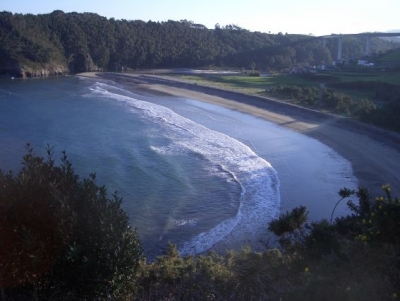
In the county of Valdés, you can enjoy plenty of beaches with differences in sand, boulders, landscape, suitable for swimming.
- Otur Beach
- Barayo Beach
- Beaches in Luarca
- Portizuelo Beach
- Tauran Beach
- Cadavedo Beach
[nggallery id=7]
En el concejo de Valdés podrá disfrutar de un monton de playas diferencias; de arena, de canto rodado, de interés paisajistica, aptas para el baño.
Playa de Otur: Playa de arena, de unos 700m. Muy concurrida en verano, se accede desde le pueblo de Otur.
Playa de Cueva: En ella desemboca el rio Esva. Playa de arena y canto rodado.Muy amplia.Se accede desde el pueblo de Cueva.
Playa de Barayo: Declarada Reserva Natural Parcial, se encuentra en la desembocadura del rio Barayo. Es muy frecuentada por Naturista.
Playas de Luarca: Playas de Arena en la misma villa de Luarca. Es una gran ensenada abrigada por los dos espigones.
Playa de Portizuelo: Playa de Canto rodado y de gran belleza paiajistica. Cuna de inspiración del premio nobel de medicina Severo Ochoa.
Playa de Tauran:a 2Km de Luarca. Playa de canto rodado. El entorno formado por un islote frente a la playa, una ensenada entre acantilados, la desembocadura del arroyo y la propia playa, configuran un hermoso paisaje, ideal para excursionistan que prefieran lugares apartados. Ocupación baja.
Playa de Cadavedo: Playa de forma alargada es principalmente de canto rodado y arena.De gran belleza natural. Se llega desde el pueblo de Cadavedo.
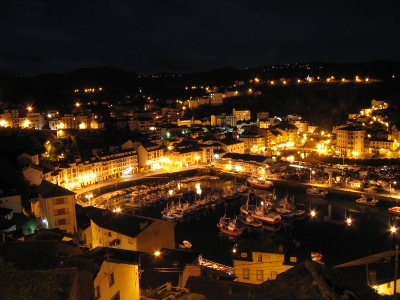
is the capital of Valdés County, more well known as “Villa Blanca de la Costa Verde” (White Village of the Green Coast).
Situated at the mouth of EL RIO NEGRO and flanked by the fishing neighborhoods of de "El Cambaral" y "La Pescaderia".
It is one of the most important fishing ports in western Asturias. Int the XIII century, Alfonso X awarded it the title of village.
What to see in Luarca:
- Bureau of sailors and merchants
- Cemetery, where the remains of the Nobel Prize winner, Severo Ochoa and his wife lay.
- Chapel of “La Blanca y Nazareno”
- Lighthouse
- Properties of Indians, in Villar. They are mansions that were built in the late nineteenth and early twentieth centuries, with the return of the Indians, mostly from Argentina and Cuba.
- Viewpoints of Chano and Funiar.
- Church of St. Eulalia.
- The neighborhoods of Cambaral, la Pescadería, La carril
- Bridge of the kiss, with its legend.
- The return of fishing boats, and then the auction at the fish market.
- Museum of the Giant Squid. CEPESMA.
- Museum of Severo Ochoa.
- Palace of Marqués de Ferrera.
